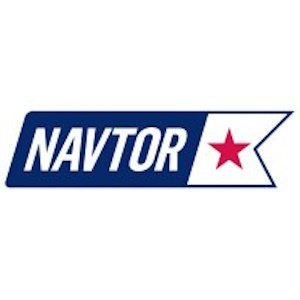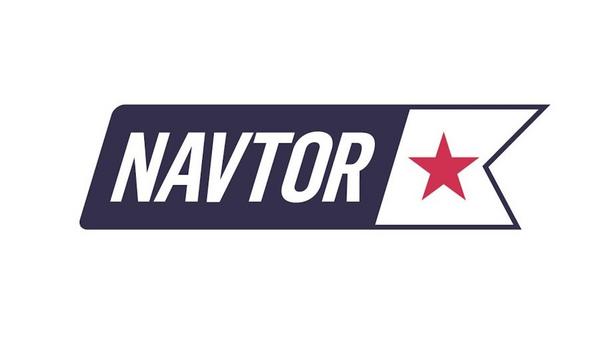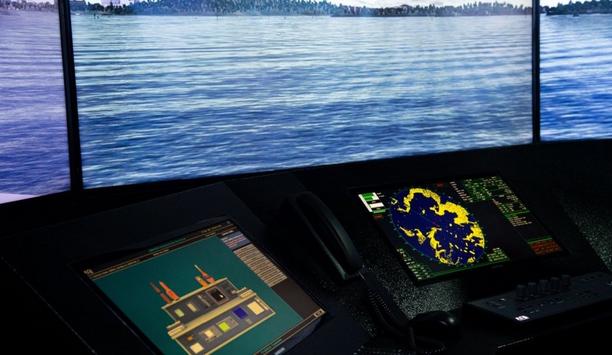NAVTOR - Experts & Thought Leaders
Latest NAVTOR news & announcements
NAVTOR is continuing to build momentum for its ‘Digital Logbook revolution’, with the news that Japan’s Ministry of Land, Infrastructure, Transport and Tourism (MLIT) has awarded full flag state approval for the innovative solution. Japan joins other leading shipping nations, such as Panama, Liberia, Marshall Islands, Malta, Cyprus and Singapore, amongst others, in endorsing the IMO compliant offering for registered vessels. Amitabh Sankranti, Shipping Analytics Director, NAVTOR, calls the development “A major step forward in the acceptance, and awareness, of the huge advantages of moving log-keeping into the digital age.” Transforming tasks NAVTOR’s offering transforms what many see as an old-fashioned and inefficient practice NAVTOR’s offering transforms what many see as an old-fashioned and inefficient practice. Instead of busy crew members having to handwrite submissions into standalone books – a time-consuming and error-prone process – shipping companies can take advantage of seamlessly connected digital logs (both on ship and shore), empowering data-driven decision making, easier compliance and powerful business efficiencies. Crewmembers, meanwhile, make entries with ease, using the secure solution on phones, tablets and computers. It's a joined-up, transparent approach that has now rolled out to more than 1,000 vessels worldwide. Sankranti says approval from Japan will further accelerate adoption. A new wave of efficiency “Our customers in Japan and across Asia have been eagerly awaiting this flag approval, giving them the go ahead to embrace a revolution in log-keeping,” comments Amitabh Sankranti, adding “Choosing pixels over paper takes an unloved format and transforms it into a powerful source of accurate, instant and integrated data, informing decisions that drive real operational and business efficiency. We strongly believe it’s an approach the whole industry is poised to adopt. To be blunt, it makes absolutely no sense to be left in the analogue age.” He continues: “I’d also like to note that this approval wouldn’t have been possible without the dedication of our Japan-based team, who worked closely with authorities to demonstrate complete regulatory compliance, while showcasing the practical benefits of using our Digital Logbooks onboard. They’re now looking forward to sharing the same insights with our valued customers in the region.” Early adoption On that note, NAVTOR has already reached agreement with major customer NYK Shipmanagement to transition its Japan-flagged vessels over to Digital Logbooks. Speaking about the move, Anubhav Garg, Managing Director & COO at NYKSM, says: “We’ve been watching the development of Digital Logbooks for some time. The benefits are compelling and dovetail perfectly with our drive to enhance efficiency, ease compliance, build sustainability and provide optimal value for all our business stakeholders.” He adds, “We’re delighted that flag state approval has been forthcoming and look forward to realising the anticipated benefits across our advanced vessel fleet.” Conclusion Alongside Digital Logbooks, NAVTOR offers a range of e-Navigation and performance monitoring and optimisation products and services, united by a secure, integrated digital ecosystem that connects vessel and shore-based teams. The Norwegian-headquartered company is a global leader in its segments, delivering innovations to over 18,000 vessels worldwide.
How to take the industry’s ‘ultimate planning tool’ and improve it? Giving users what they need, often before they know they need it, and staying ahead of evolving trends and regulations? Timo Essers, e-Navigation Director at NAVTOR, explains the philosophy driving the continual evolution of NavStation, while outlining the headline updates to the soon-to-be released NavStation 6.4. Navigators and shipping businesses "When you have products and services onboard over 18,000 vessels you tend to get a lot of feedback!" said Timo Essers may be grinning broadly, but he has a very serious point. The Dutch-born e-Navigation Chief at Norwegian-headquartered NAVTOR says he, and his global team, are committed to 'making life easier' for both navigators and shipping businesses, but to do that they have to understand current and future pain points. Maritime planning capabilities Partnership now pushing maritime planning abilities to new heights with the release of NavStation 6.4 "It’s not up to us to dictate to users, but rather to have them dictate to us – sharing their experience so we can use ours, both digital and navigational, to come up with optimal solutions," says Timo Essers, adding: "This industry is increasingly complex, with new regulations, guidelines, commercial considerations, reporting requirements, and risks emerging continually." He continues, "By putting the customer at the absolute centre of everything we do, and understanding their challenges, we can help them navigate this complexity simply, efficiently and profitably. In that way we’re not really a supplier – more of a partner. Always onboard to deliver added value, translating demands into innovations." It's a partnership currently pushing maritime planning capabilities to new heights with the upcoming release of NavStation 6.4. Transforming efficiency Launched in 2014 as the maritime industry’s first digital chart table, NavStation has spent the last decade cementing a position, in Essers’ words, as 'the ultimate planning tool'. Update after update has seen the software adding an increasing number of business- and operation-critical data layers and modules seamlessly over ENCs, putting 'everything a navigator needs at their fingertips'. The platform offers everything from weather routeing, to detailed port information, environmental regulations, AMVER reporting, a manoeuvring assistant, NAVAREA warnings, and much more, while automating tasks and auto-populating reports to slash administration, eradicate errors and enhance vessel and fleet efficiency. NavStation’s Passage Planning module NavStation’s popular Passage Planning module is a case in point, reducing time on each task NavStation’s popular Passage Planning module is a case in point, reducing time on each task from an average of 3.5 hours to 30 minutes, or less. “We may work in maritime technology, but the majority of the team here have extensive vessel experience,” says Essers, who is himself a seasoned navigation officer. “So, this is a platform made for navigators by navigators. We know the pressure our users are under. Thankfully, as we’ve shown with Passage Planning, we also know how to make things easier for them.” It's a process that, like the industry it serves, never stops. Small steps, big advantage Essers reveals that NavStation 6.4 sees a broad spectrum of enhancements, 'taking functionality and futureproofing to a new level.' In terms of functionality it has a vast range of 'small but powerful' improvements, he notes, including better search capabilities, advances in auto-routing (such as automatically blocking waterways for certain vessels based on the latest AIS tracking intelligence), integrating port and trade statistics into the extended ports database, the ability to combine company regulations with environmental regulations, and much more. NAVTOR’s ability to stay ahead of the curve and help customers navigate the future is shown in 6.4’s new S-100 compatibility. Enhancement of NavStation 6.4 The integration of real-time Security Risk Data from Risk Intelligence as a new, flexible subscription offering "Much of the industry may not be aware of the scale of change ahead with the upcoming S-100 data standard," states Timo Essers, adding "Transforming static charts into more dynamic, 3D, data-rich formats." He continues, "By making NavStation compatible, and giving users the ability to access data such as S-102 (bathymetric surface data) now, we can help them get to grips with this new navigational reality - understanding the benefits, honing skills, and easing future adoption. It’s a tangible example of how our approach delivers real added value." As is, arguably, the headline enhancement of NavStation 6.4, the integration of real-time Security Risk Data from Risk Intelligence as a new, flexible subscription offering. By the side worldwide “We’ve been working towards adding an up-to-the-minute risk layer over ENCs for some time,” Essers says, adding that it’s been, in his view, “a missing piece of the e-Navigation puzzle.” Now, however, that piece is firmly in place, allowing navigators, and relevant shore-side teams, to plan and understand voyages with safety and simplicity, fully aware of maritime’s ever-changing risk picture. Navigational jamming and spoofing Timo Essers explains: "From conflict and ongoing geopolitical unrest, to piracy, narcotics, and people smuggling - in addition to increasing navigational jamming and spoofing - today’s shipping companies face a complex and ever-evolving threat landscape. Navigators are, in many ways, on the front line, and as such are under immense pressure." He continues, "However, with clear, customisable and relevant notifications layered onto ENCs – empowered by Risk Intelligence’s world-pioneering team of expert analysts – our users can now approach planning with informed peace of mind. We see this as a landmark development for our own product, but also for the industry – enabling safer, simpler and smarter navigation in a changing world of threat." Privilege and passion Despite the major updates, level of innovation and ability to lead the way in e-Navigation, Timo Essers insists "We’re not there yet, there’s more to come. I’m incredibly proud of what we, in conjunction with our partners and customers worldwide, have achieved with NavStation. We are delivering on our promise of developing smart solutions that make life easier for shipping companies, benefiting the whole industry." He smiles, adding, "I’ve always said we want to voyage towards perfection. But, in an ever-changing industry, that means perfection is shifting all the time – it’s a moving target. Although this could be somewhat of a depressing realisation – you put your heart and soul into a project only to find it’s never actually completed – Essers’ sees through an entirely different lens." Navigator planning “I enjoy the voyage,” says Timo Essers, with a beam worthy of any navigator planning the optimal route ahead. He continues, "Shipping is dynamic, that’s what makes it so interesting, and innovating to match evolving customer demands is both a privilege and, I think I can speak for the whole team, a passion. So, I’m looking forward to plenty more feedback, and developments, in the years to come."
NAVTOR Founder and CEO Tor Svanes is somewhat of a legend within e-navigation and maritime technology. With close to six decades of expertise to draw on, and a track record of launching industry-defining innovations, his understanding of past, present, and future developments is second to none. So, what does he think awaits on the horizon as we sail into 2025, and beyond? FuelEU Maritime “FuelEU Maritime is just the start!” Tor Svanes has a knack for getting straight to the point. Speaking from his office at NAVTOR’s headquarters in Egersund, Norway, he dives into the conversation with an opinion few others appear to be voicing in the uproar around this most exacting of new regulations. “What it does is set a standard,” he clarifies, “a standard others will follow.” Climate goals IMO will be obliged to follow suit, with something like a ‘FuelGlobal Maritime’ joining the EU measure Svanes believes that driven by ambitious climate goals and stakeholder pressure, organisations such as IMO will be obliged to follow suit, with something like a ‘FuelGlobal Maritime’ joining the EU measure once its efficacy has been proven. The timescale of such a development is up for debate, he notes but says “within the next five years” is highly likely. Compliance options “What that means,” Svanes stresses, “is that everyone needs to sit up and take notice – to understand how this works and what is required for compliance. Owners and operators shouldn’t put off considering, and planning, future compliance options now. For Europe, of course, but also beyond. “The longer you wait,” he adds, “the harder, and more expensive, it’s going to get.” Cutting through complexity Svanes is accustomed to viewing developments from a big-picture perspective. Decades of experience – taking him from his first sea-going position in 1968 to the head of C-Map Norway in the 90s, and finally to the foundation of NAVTOR in 2011 – has given him the ability to cut through complexity with simplicity, clarity, and vision. His mission, and that of NAVTOR he notes, has always been to enhance safety, efficiency, and profitability for shipping companies, using digital innovations to tackle industry pain points. Or, in other words, “making life easier.” Digital e-navigation and monitoring ecosystem A prospective customer asked an existing one about why they used NAVTOR’s integrated digital e-navigation He says one of the best bits of feedback he’s heard was when a prospective customer (the company has products and services on over 18,000 vessels in the world fleet) asked an existing one about why they used NAVTOR’s integrated digital e-navigation and monitoring ecosystem. Svanes grins with obvious delight. “He said, and I quote, ‘it just works’.” The cost of compliance That might not sound like the most fulsome praise, but in an increasingly complex regulatory and operational reality getting an integrated approach that “just works” is much harder than it seems. This takes us back to FuelEU Maritime. Svanes says this exemplifies a “new breed of regulations” – measures both accelerating in speed and growing in impact. Financial implications “I’m not sure people fully understand the financial implications of FuelEU for example,” he says, using a typical vessel, a Supramax bulk carrier, to illustrate the point. “This might cost around USD 15000 a day to charter,” Svanes states, “but if you look at the upcoming cost of compliance penalties for a voyage into Europe, on conventional fuel (without using biofuels or allowance pooling), there’s many thousands more waiting to be paid.” FuelEU penalty In 2025, Svanes points out, the FuelEU penalty would be around USD 5000, but this would rise to USD 17,922 Just how many thousands becomes apparent when considering a case study of a 58,000dwt Supramax sailing from New York to Rotterdam, a voyage of around 11 and a half days. In 2025, Svanes points out, the FuelEU penalty would be around USD 5000, but this would rise to USD 17,922 in 2030 (if no changes to the fuel/energy use are made) and a colossal USD 255,000 in 2050. Cost-effective compliance “And these are penalty costs for a voyage into Europe,” he adds. “If you’re sailing exclusively within Europe the costs are doubled!" “So, as you can appreciate, there’s a clear need to ensure a) that the costs are correct b) that the right party covers them and c) there are options for reducing them,” Svanes says the foundations for confident, cost-effective compliance are digital. Automatic advantage Systems that collect the right data, of the right quality, automatically, without extensive human inputs and calculations (“a major source of omissions and errors”) are “a must”. “There’s still a tendency to use spreadsheets to track fuels, consumption, and emissions,” he comments, “but that won’t suffice in the new ‘well-to-wake’ context, where the demands for precise, validated, and comprehensive data are so great." Efficient, accurate, and insightful “Automated data collection, with integrated solutions across vessels, fleets, and organisations, is not only vastly more efficient and accurate, but will also deliver the insights to empower better business decision making." “This will be essential when it comes to deciding upon, for example, optimal fuel mixes, banking, pooling and borrowing emissions allowances, and evaluating non-compliance penalties.” Performance monitoring solutions NAVTOR, he adds, has just released a “major update” to its NavFleet monitoring solution The greater the integration – with for example digital logbooks ‘talking’ to e-navigation tools and performance monitoring solutions – the simpler the process, and the greater the benefits. "Having one ‘point of truth’ where high-quality, validated data can be shared with verifiers, and throughout your organisation, is not only ‘easy’,” he says, “it unlocks real value.” NAVTOR, he adds, has just released a “major update” to its NavFleet monitoring solution - which already offered automated verification and compliance reporting for regulations such as EU MRV – to help customers navigate the new reality with confidence. Leading the way on S-100 On the subject of navigating the future, Svanes is also eager to identify the advent of the new S-100 data standard as a “redefining step” for e-navigation, and the maritime industry in general. S-100 takes the ‘flat’, static format of S-57, the current standard for hydrographic data, introduced in 1992 to enable the transition from paper to electronic charts and catapults it into the 21st century. In short, it allows for multiple layers of real-time data to work seamlessly together, giving more of a fluid ‘3D’ representation of the marine environment. Vessel optimisation “So,” Svanes explains, “say you’re sailing into an area with extreme tidal changes, you could see the tidal levels as they vary on the charts. Or if you’re entering a port with challenging underwater features, tides, and currents, you could navigate with greater security." "That level of insight would also allow you to optimise the size of the vessel for the operation – maybe you could deploy a larger one if you know you have ample under keel clearance, thus increasing efficiency and profit." Operational and commercial decision-making NAVTOR is already working with hydrographic offices around the world to help ease adoption “S-100 has real potential to enhance both operational and commercial decision-making.” Although the official roll-out of the standard won’t kick in until at least 2026, NAVTOR is already working with hydrographic offices around the world to help ease adoption, while also showcasing S-102 bathymetric data on NavStation so customers can get to grips with tomorrow’s navigation today. Evolving platforms “We develop our own ECDIS software kernel,” Svanes states, “so it’s easy for us to constantly evolve our platforms to meet industry needs. We have a NavStation at the UKHO’s head office in Taunton, England, which they’re now using to showcase what S-100 means for e-Navigation.” He smiles, calling it “a nice demonstration of the trust the highest levels of stakeholders have in our solutions.” Dual-fuel value Despite the golden opportunities S-100 promises for owners and operators, Svanes also has some words of caution. He says that anyone looking to outfit vessel bridges shortly must be aware of the need for S-100-compatible ECDIS systems. S-100-compatible ECDIS systems A failure to think ahead will, he says, hand an advantage to the competition, “When you buy an ECDIS today you’re planning for a lifetime of eight to ten years. There’s still some uncertainty about mandated timelines, but the current date for all systems to support S-100 has been set for 2029. So this is happening, and early adopters will be the first to unlock added value." “With that in mind, it pays to look into ‘dual fuel’ ECDIS systems for any planned upgrades or new builds. These can utilise both S-57 and S-100 data, ensuring you can take advantage of the new standard as soon as the data is available.” Ambitious impact As far as the future for NAVTOR is concerned, Svanes isn’t planning any ‘upgrades’ of his own As far as the future for NAVTOR is concerned, Svanes isn’t planning any ‘upgrades’ of his own, at least not on the scale of last year’s acquisition of Voyager Worldwide, which cemented the company’s number one position in its field (with a global market share of around 33%). “That has progressed very well,” he comments, “with a successful migration of customers onto NAVTOR platforms, while our headcount has grown to approximately 400 maritime technology and navigation specialists. It gives us the scale and competence we wanted to meet industry demand.” Environmental advantages Future growth will, he implies, be more organic, although he won’t rule out “strategic acquisitions” under the right circumstances. “It’s impact we’re looking to grow now,” Svanes concludes, noting how the sheer size of the customer base means that the efficiencies, cost savings, and environmental advantages NAVTOR solutions unlock can make waves throughout the industry. Reduce vessel fuel consumption “If you consider the GASS project (Green AI for Sustainable Shipping) we’re currently pioneering, that has the clear potential to reduce vessel fuel consumption, and thereby emissions, by 20% through advanced machine learning, digital twin technology, and a constant flow of high-quality data." “Multiply that 20% by our market share and you can appreciate the difference we, and our partners, can make on a global scale. “There’s so much we can do!” Tor Svanes and NAVTOR, it seems, are just getting started.
Insights & Opinions from thought leaders at NAVTOR
More than almost any trend, decarbonisation is driving the future of maritime. That reality alone makes decarbonisation the perfect topic for our first-ever Expert Panel Roundtable column. Traditional maritime fuels, like heavy fuel oil, release harmful pollutants that contribute to air pollution and have adverse health effects. We have to do better, and discussions in the maritime industry centre on which combination of alternative fuels and other technologies can solve the shorter- and longer-term challenges of decarbonisation. For an update on the various approaches, we asked our Expert Panel Roundtable: What are the latest maritime technology trends in decarbonisation?









